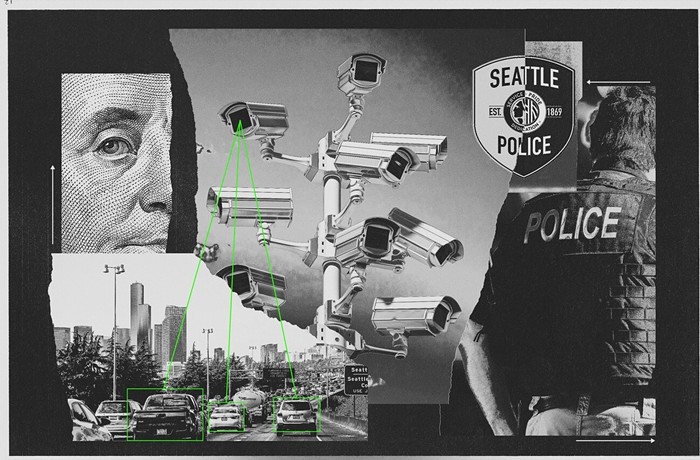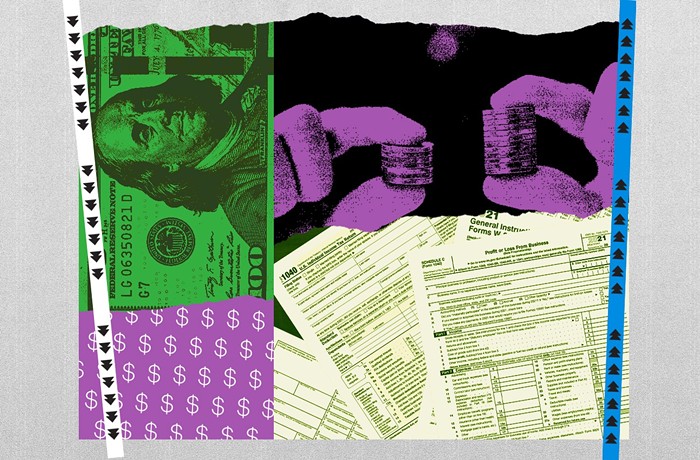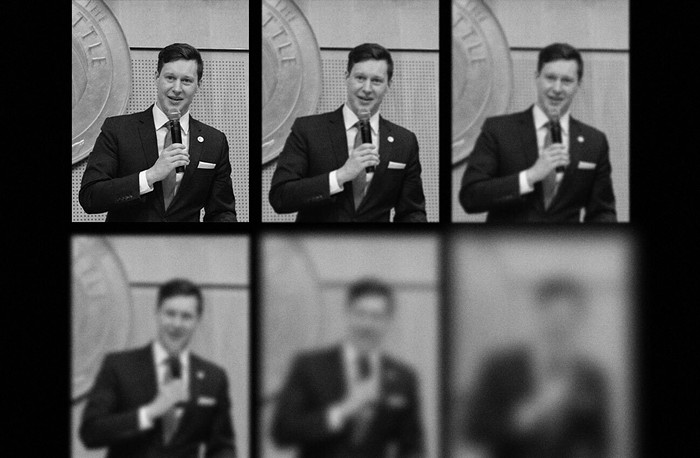What most people don't know, however, is that Sound Transit has also been snowing the federal government. Close readings of Sound Transit's grant application to the Federal Transit Administration (FTA) and the Feds' recent Sound Transit audit reveal that the local agency--in order to secure a $500 million federal grant--is playing fast and loose with the facts.
At issue is a concept known as "subarea equity." This is a fancy term used to describe a simple concept: Taxpayers from one region of Sound Transit's five-region project area shall not foot the bill for work that benefits another region. (The regions are Snohomish County, north King County, south King County, east King County, and Pierce County.) In short, Eastside tax revenues aren't supposed to pay for the Capitol Hill tunnel, where costs are likely to run more than $300 million over budget. Subarea equity was mandated by the voters when they created Sound Transit in 1996.
Unfortunately, according to several critics, Sound Transit isn't being straight with the Feds about the restriction. This is clear when one reads Sound Transit's grant application to the FTA. For example, page 48 states cavalierly, "If it becomes apparent that subarea revenue and expenditure trends will diverge, the financial policies provide adjustments to the plan." The Feds, apparently, have been misled by this characterization. The federal audit gullibly explains subarea equity this way: "The Board has substantial flexibility to amend... subarea equity principles in order to best implement [Sound Transit]...." It continues, "Subarea equity principles do not apply to Sound Transit's legal obligation to repay bond debt. All subarea funds are collectively and legally pledged to repay bond debt without regard to which subarea benefited from the debt."
This is news to Emory Bundy, transit geek and former director of the philanthropic Bullitt Foundation. "Sound Transit is finessing this imbroglio by soft-pedaling its subarea equity policy... in its representations to the federal government," Bundy says.
Sound Transit spokes-person Denny Fleenor will only say that the Sound Transit Board is committed to making subarea equity work. He also says that the "adjustments" referenced in the grant application don't represent any change in policy. While he won't elaborate, it's clear from conversations with Mayor Schell's office (Schell is a Sound Transit board member and light-rail diehard) that for some board members, subarea equity is a "gray area" up for interpretation. For example, a Seattle-area board member could argue that the Capitol Hill tunnel would be a benefit to a commuter in Snohomish County.
But one of the agency's own, Sound Transit Board Member and Eastside King County Council Member Rob McKenna, says subarea equity can't be adjusted. "What the Feds don't understand," he says, "is that subarea equity is a binding obligation that cannot be changed without voter approval."
Citing attorney/client privilege, Sound Transit general counsel Desmond Brown wouldn't address whether it's legal to overturn subarea equity without a public vote. But McKenna is persuasive--backing up his argument by referencing the original Sound Transit plan from 1996. The plan says that when the cost of a subarea's segment of the Sound Transit project exceeds the ability to fund it, "the Board shall take one or more of the following options"--tap the subarea's uncommitted funds, scale back subarea projects, or send a new plan to the voters. Those are the only choices.
"The likelihood of any voter outside Seattle approving the abandonment of subarea equity is nil," says brainiac McKenna, who looks something like an elegant, younger Bill Gates.
The reason Sound Transit is interested in downplaying the concept of subarea equity to the FTA is obvious. Seattle doesn't have enough money to pay for its portion of light rail on its own. In its grant application, Sound Transit used the University of Washington to South Lander Street line as an example of its solid financial planning. In truth, however, the 7.2-mile line is plagued with cost overruns, and Seattle's north King County subarea is struggling to fund it. Bundy warns that "the entire shebang [UW-South Lander] must be financed by north King County revenues." While the line is going to cost north King County at least $1.6 billion, it's curious that Sound Transit couldn't provide a dollar figure on the subarea's bonding capacity (tax revenues on which the ability to issue bonds is based). With cost overruns already in the hundreds of millions, north King County will clearly have to push the limit of its bonding capacity. To hide this fact, Sound Transit is being deceptive.
For example, while touting the UW to South Lander Street line to the Feds, Sound Transit plays up its hefty bonding capacity, but downplays important details. "Sound Transit's ultimate contingency is its untapped debt capacity... of $2.6 billion," the application reads. "Sound Transit could issue additional bonds without violating the policy and legislated constraints on its debt capacity." Unfortunately, the $2.6 billion represents the bonding capacity of all the subareas combined, not that of north King County.
It's clear then, that in order to meet Sound Transit's legal obligation to the Feds--completing a light-rail system--the agency will eventually have to jeopardize the principle of subarea equity by borrowing against the tax revenues of places like the Eastside, where current bonding capacity is robust (estimated at $800 million). If Sound Transit does that, McKenna pledges to sue the agency. "Most of the money would be borrowed from the Eastside," he says. "I'm from the Eastside, and I guarantee there will be a lawsuit. I'll bring it myself. I'll see you in court."


















